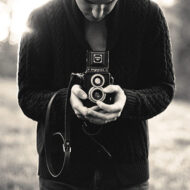Plotting Cast Shadows in Your Drawing Successfully
Plotting cast shadows can make or break your drawing. It might not jump right out at you but your brain realizes that something is off. It’s very much like if your perspective is off in your drawing.
Why? Because plotting cast shadows IS perspective. That’s how it works.
The reason why you can’t just slap a shadow down behind an object and have it look right is because shadows don’t just fall at random locations. Shadows are not haphazard. They have to follow the same rules of perspective just like the rest of the objects in your drawing. That means they are very predictable and very plottable. If you have one light source, all shadows from all objects must follow the light source correctly in order to understand the light and where the source is in your drawing.
In a previous post, I gave several examples of plotting cast shadows with a light source coming in from an angle. I did not illustrate in detail how to plot shadows with a single light source directly overhead. The example I’ll show you now is a single light source directly overhead and between three objects.
If the light source is between several objects, the shadows will cast outward in different directions.
The key is in laying down plot lines which will help guide you.
Let’s assume you’ve drawn out a room with several items laid out on the floor. There is a single lightbulb overhead in the middle of the ceiling.
The first step is to drop a line from the bulb straight down to the floor. From that point on the floor, draw three lines to each item. One on the left edge and one on the right edge. These lines create the sides of your shadow. You’ll also need a line through the center.
Next, you’ll draw a line from the bulb and over the top edge (center) of the object and down to the center ground line. Where the lines meet marks the top of your shadow.
That’s the very basic method of plotting cast shadows in your drawing. But obviously, most objects are not perfect cylinders or cubes. So in order to accurately plot odd shapes such as the bottle on the left, you’d find a point on the object to add another plot line.
For example, the bottle on the left has an edge about halfway up where it begins to taper in towards the neck of the bottle. So, how long and skinny should the shadow be for the neck of the bottle? And how drastically should the slope of the bottle be from the wider part of the bottle to the neck?
Don’t panic. Just add more plot lines.
Let’s start off with the neck. You already have the top of the bottle marked. That indicated the center of the top of the shadow. *From here on, I’ll color code the lines to make it easier for you to keep track.
If you add a line (green) from the bulb to the left of the bottle top to the ground and add another through the right of the bottle top to the ground, you’ll have the width of the top of the shadow.
Do the same thing for the bottom edge of the neck on each side. (light blue)
Do the same thing for the bottom of the sloped edge on each side. (red)
Use those plot points on the ground to connect the outline of your shadow and fill it in.
Watch the video to see the process for the other two objects.
In some cases, if the shadow looks odd, I will adjust it. The purple bottle is a good example. Watch the video for this minor correction.
It might be confusing at first, but with practice, you should be able to plot cast shadows to your heart’s content. Plotting accurate shadows will always help in creating a more believable environment in your artwork. It’s just a matter of practice, practice, practice!
Further Reading:
This blog contains Amazon Affiliate links. As an Amazon Associate, I may earn from qualifying purchases.







Recent Comments